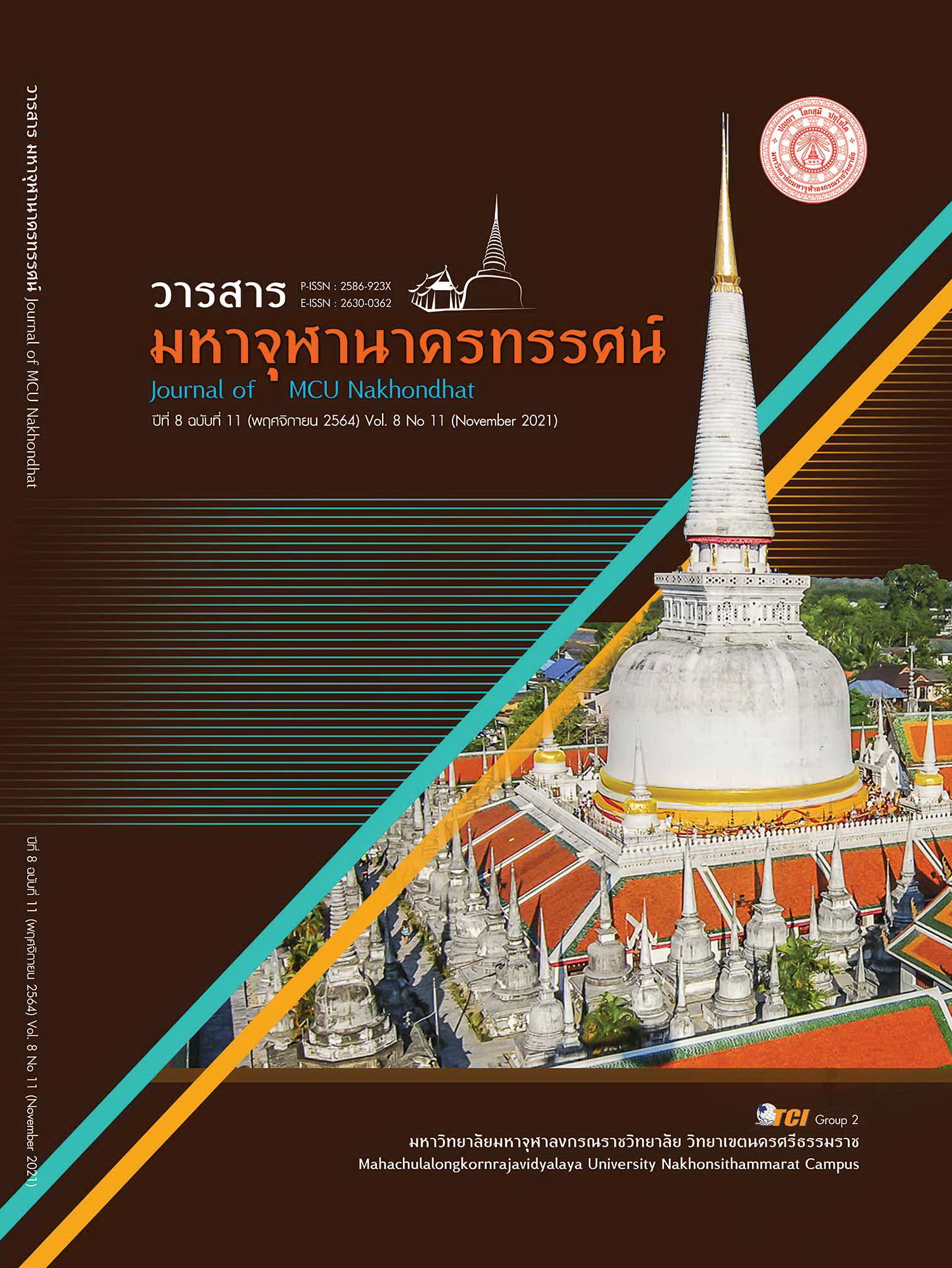SIMULATION-BASED LEARNING IN NURSING EDUCATION: CLASSROOM TO ONLINE PROGRAM
Main Article Content
Abstract
In consequence of the pandemic of coronavirus 2019 (Coronavirus Disease 2019: COVID-19) there are restrictions on class management that require social distancing. Moreover, it affects to students from practicing the actual laboratory experiments and there is also a lack of opportunity to practice experience on the ward as usual. In nursing education program, not only theoretical nursing studies but also practical nursing experience in-patient care is very important as the heart of the nursing study. Accordingly, Simulation-Based Learning (SBL) enables teaching-learning that encourages learners with the opportunity to learn as close to reality as possible. Combination teaching - learning with SBL with online programs will support teaching - learning in the coronavirus 2019 epidemic situation more efficient. This article aims to presents the way of teaching with SBL with an online program. It consists of concepts, process and program samples. This online program is based on the simulation model concept of The National League for Nursing, follow the steps of ADDIE Models. The results of learning with online programs, in addition to helping learners get the opportunity to practice their experiences as close reality as possible. It also allows learners to practice right-wrong learning on their own. It can be retrained according to their needs to gain expertise, gain confidence in nursing skill. Furthermore, it also encourages learners to know how to solve problems. Planning classes, managing time and spending free time to the advantage.
Article Details
References
แดนชัย ชอบจิตร และคณะ. (2560). ผลของการจัดการเรียนรู้โดยใช้บทเรียนผ่านเว็บ(Web-Based Instruction) ในรายวิชาการพยาบาลครอบครัวและชุมชน 2 สำหรับนักศึกษาพยาบาลศาสตร์ วิทยาลัยพยาบาลบรมราชชนนี พะเยา. วารสารการพยาบาล การสาธารณสุขและการศึกษา, 18(2), 95-105.
นุสรา นามเดช และคณะ. (2564). การพัฒนาสื่อมัลติมีเดียเพื่อการเรียนรู้เรื่อง การพยาบาลโรควิตกกังวล สำหรับนักศึกษาพยายาล. วารสารการพยาบาลและการศึกษา, 14(1), 48-62.
มาโนชญ์ ตนสิงห์. (2558). ศาสตร์และศิลป์ของการเขียนโปรแกรมคอมพิวเตอร์. เรียกใช้เมื่อ 4 กันยายน 2564 จาก https://erp.mju.ac.th/openFile.aspx?id=MzUyMjE1 &method=inline
มาลี คำคง และคณะ. (2559). ผลของการใช้สถานการณ์จำลองต่อความมั่นใจในความสามารถของตนเองในการดูและการช่วยฟื้นคืนชีพขั้นสูงสำหรับผู้ป่วยวิกฤตฉุกเฉินของนักศึกษาพยาบาล. วารสารเครือข่ายวิทยาลัยพยาบาลและสาธารณสุขภาคใต้, 3(3), 52-64.
วงเดือน สุวรรณคีรี และคณะ. (2559). การจัดการเรียนรู้โดยใช้สถานการณ์จำลองสำหรับนิสิตนักศึกษาพยาบาล. วารสารพยาบาลศาสตร์ จุฬาลงกรณ์มหาวิทยาลัย, 28(2), 1-14.
วันดี แก้วแสงอ่อน และจามจุรี แซ่หลู่. (2562). การพัฒนาโปรแกรมสถานการณ์จำลองเสมือนจริงในรูปแบบสื่อออนไลน์เพื่อส่งเสริมความรู้ในการพยาบาลผู้ป่วยโรคปอดอุดกั้นเรื้อรังที่มีอาการกำเริบ. วารสารวิทยาลัยพยาบาลบรมราชชนนีอุตรดิตถ์, 11(2), 213-228.
วิทยา วาโย และคณะ. (2563). การจัดการเรียนการสอนแบบออนไลน์ภายใต้สถานการณ์แพร่ระบาดของไวรัส COVID-19 : แนวคิดและการประยุกต์ใช้จัดการเรียนการสอน. วารสารศูนย์อนามัยที่ 9, 14(34), 285-298.
ศักดิ์คเรศ ประกอบผล. (2563). การออกแบบและพัฒนาบทเรียนคอมพิวเตอร์ช่วยสอนโดยใช้แอดดี้โมเดลและแนวคิดของกาเย่. วารสารครุศาสตร์สาร, 14(1), 17-30.
สมจินต์ สินธุชัย และกันยารัตน์ อุบลวรรณ. (2560). การเรียนรู้โดยใช้สถานการณ์จำลองเสมือนจริง: การนำไปใช้ในการเรียนการสอน. วารสารพยาบาลทหารบก, 18(1), 29-38.
สุรชาติ สิทธิปกรณ์ และคณะ. (2560). ผลของการจัดการเรียนรู้ด้วยหุ่นจำลองเสมือนจริงต่อความมั่นใจในตนเองและความพึงพอใจของนิสิตพยาบาลชั้นปีที่ 3 คณะพยาบาลศาสตร์มหาวิทยาลัยมหาสารคาม. วารสารมหาสารคาม, 14(1), 600-609.
Jeffries, P. R. & Roger, K. U. (2007). Theoretical framework for simulation design. In P.R. Jeffries (Eds), Simulation in nursing education: From conceptualization to evaluation (pp. 21-33). New York, NY: Nation League of Nursing.
Kolb, A. Y. & Kolb, D. A. (2005). The Kolb Learning styles Inventory-version 3.1 2005 Technical Specifinications. Retrieved July 20, 2021, from https://www.researchgate.net/publication/241157771_The_Kolb_Learning_Style_Inventory-Version_31_2005_Technical_Specifi_cations
Kurt, S. (2017). ADDIE Model: Instruction Design. Retrieved December 14, 2018, from http://educationaltechnology.net/the-addie-model-instructional-design/


